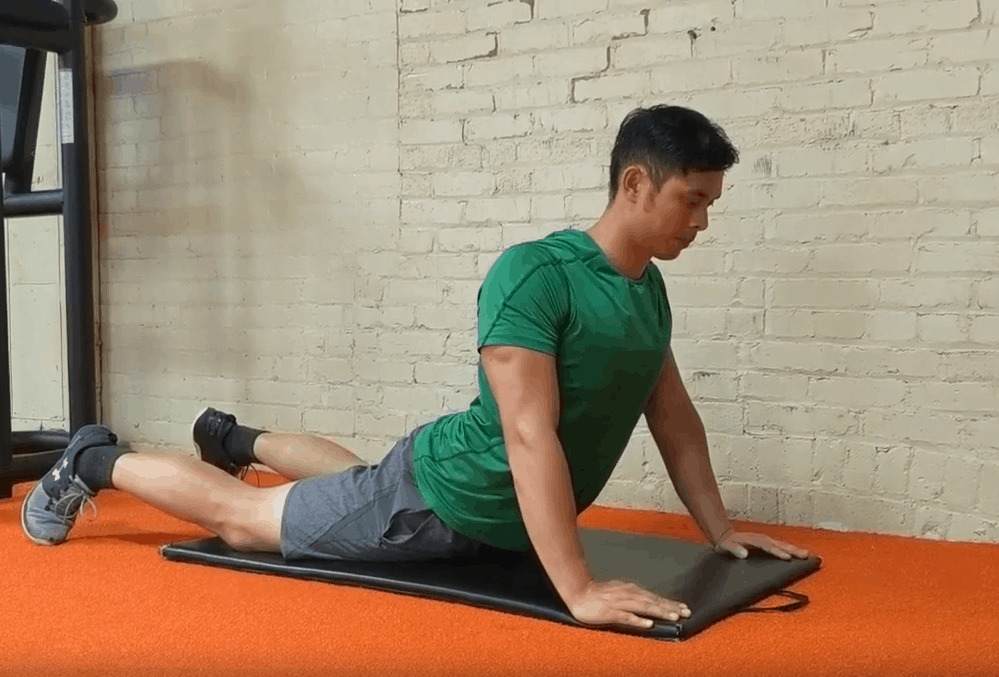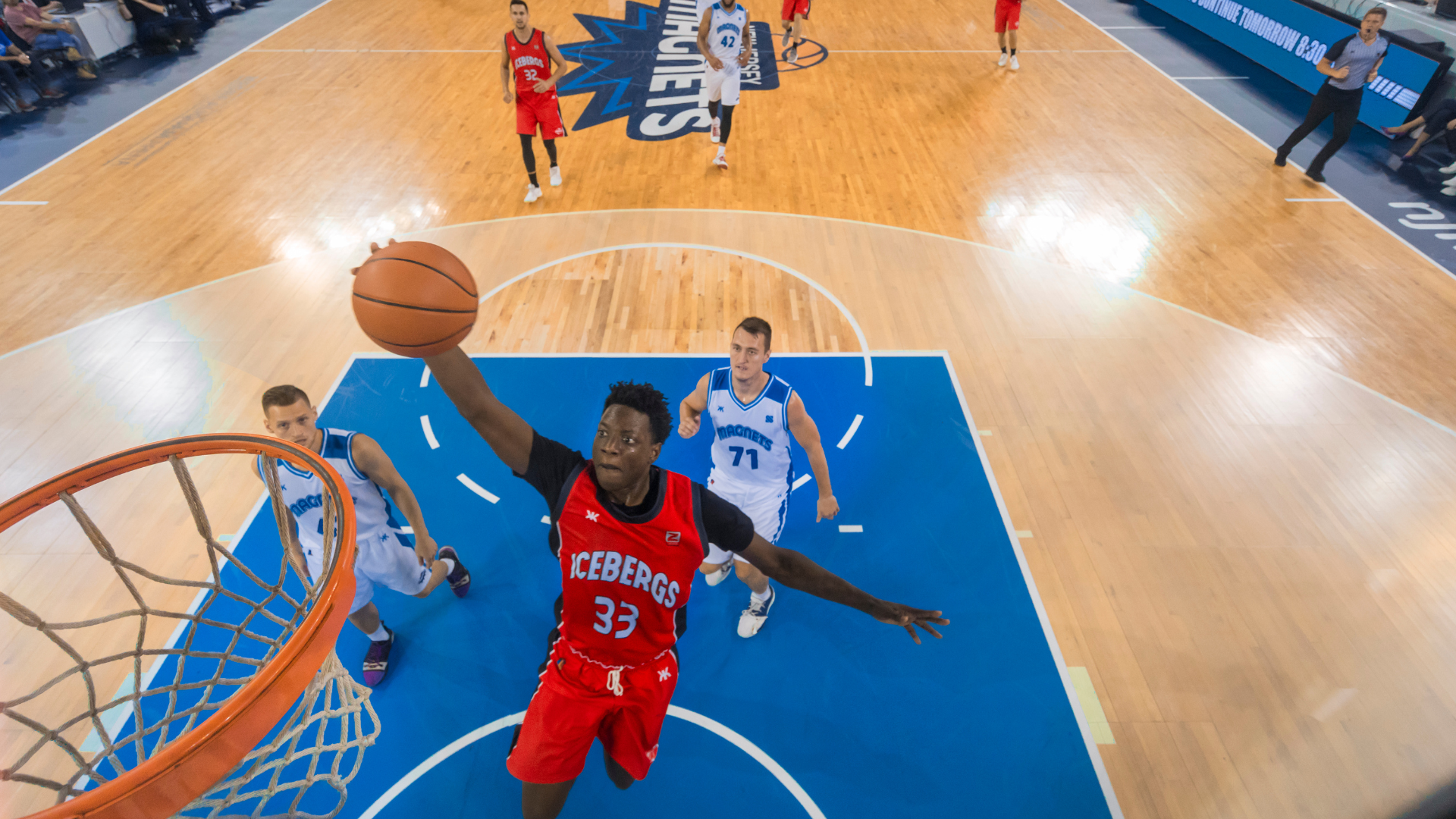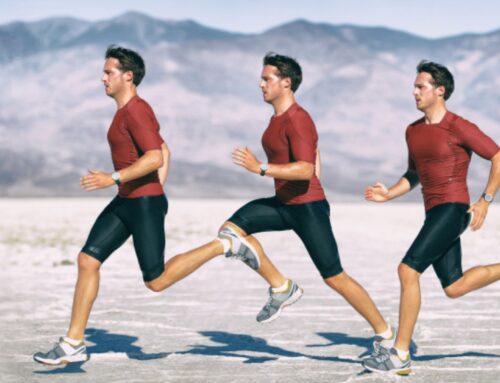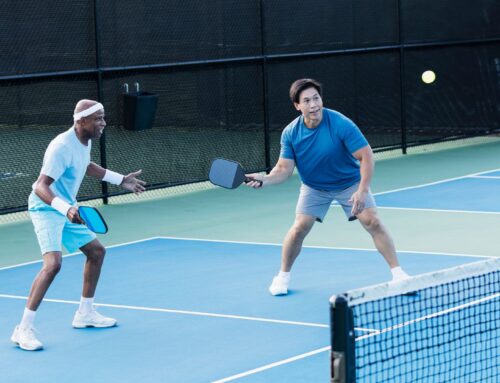Physiotherapists tend to see some common cycling injuries and issues when clients come into the clinic, whether they are beginner cyclists, avid cyclists, or competitors. Many of these issues stem from being in a forward flexed position or crouched position with the hips bent towards the stomach for prolonged periods of time; and looking forward with the neck curved back.
From a physiotherapist’s perspective, it is really important that anyone playing a sport or doing an activity that puts them in the same position or repeating the same motion for prolonged periods of time undertakes appropriate cross training measures. When it comes to cycling specifically, while it is great to get your exercise in on the road or in spin class, it is important to balance the other portions of your body as well.
Muscle imbalance is a catch-all term intended to educate clients. It doesn’t mean there is something disproportionately wrong with someone’s body and that the activity or exercise is bad and must be stopped. Compare it to sitting at your desk all day long. If you don’t get up and move around and stretch periodically, aches and pains can occur.
Typically, when I assess cyclist clients, I hear similar concerns about hip problems, back pain, and sometimes upper spine (neck) pain. Other common issues are leg and knee pain, strains or injuries caused by overuse or trauma.
So let’s take a closer look at why some of these common cycling injuries or issues occur and I will provide general recommendations for exercises that one can do to prevent or minimize occurrences.
How to Prevent Hip & Low Back Pain from Cycling
When we are cycling, the hips bend to towards the stomach for long periods of time. In addition, the hip flexors are working to bring your hip up towards your chest so that you can perform the downstroke for the pedalling motion. This can cause problems with the hip flexors, specifically psoas major, iliopsoas, and sometimes tensor fasciae latae (TFL).
There is an interesting connection between your low back and hip flexors. One particularly strong hip flexor, called the psoas major, hooks onto your low back and connects it to your hip. If you are in a forward bent position for a long time, that muscle can get used to being adaptively shortened, which can increase some of the tension that you experience in your low back.
Essentially, the low back and hips are working together. If you are engaging in cycling for long periods of time and not engaging in enough exercises to counter this effect, you will start to get hip and low back issues.
Isometric & Dynamic Core Exercises
In order to address this and make sure that hip flexors are working well with our low back, exercising our core muscles and trunk are really important. I would start off with something like a basic front plank or a side plank, to do isometric exercises for the core itself.
Then we might progress to other exercises for the core and the trunk and that would involve some mild or slight rotations to help perturb the core and activate the muscles that are necessary or functional for riding. I think it is a safe assumption that when you ride, you are not a static athlete. There is some sway back and forth to cycling. We want to emulate that when we do our core exercises and practice towards the purpose.
In this video, for example, I perform a Rotational Plank starting from a basic front plank position. This exercise is helpful in engaging not only the core muscles in the back, but also the sides of the trunk and lateral aspect of the hips. For this exercise, I like to hold each position for 3-5 seconds and continue for up to 45 seconds, 3 sets.
Another example of a dynamic core exercise would be the Rotational Bird-Dog, as demonstrated in this video. Here my goal is to try to touch my elbow to my knee without excessive rounding of my back. For this exercise, I like to focus on my form and ensure I’m not cheating by rounding or arching my back. In addition, I’m strong through my shoulders and my cue with my legs is to “reach with my heel.” I recommend 3-5 second hold, 6-8 reps preside, 3 sets.
Hip & Spinal Mobility Exercises
A healthy amount of stretching for hip flexors would be very helpful to get your body out of that crouched positions that you’ve been in for a long period. Hip flexor stretches can be performed in a variety or positions. Often, physiotherapists will prescribe hip flexor stretches that target the larger hip flexor muscles and encourage its isolation.
The Sloppy Push-up or Cobra Pose is a nice catch-all for stretching hip flexors and encouraging spinal extension. It’s important to think of your spine segmentally and that you’re not only hinging at one point through your back. The idea isn’t to see whose chest can come off the floor the highest, more so, trying to engage each segment of your spine to reach its tolerable extension range of motion. Try this mobilization as demonstrated in the video below for 30 seconds, with a 2-3 second hold at the top.
We see a lot of benefits from our clients practicing spinal mobility exercises. This can be as simple as doing cat-cow or cat camel stretches, whichever terminology you like to use. This simple stretch brings your entire spine into flexion (bending) and then the opposite extension, which a lot of cyclists may not be able to achieve when they’re in that forward flexed position for a really long time.
How to Prevent Neck Injuries from Cycling
Because we are in that forward flexed positions with our neck protruding forward, we are increasing the natural lordosis (inward) curve in the cervical spine or neck while biking. Additionally, wearing a helmet and navigating a bumpy road increases the weight and pressure on our spine.
It is therefore important that we do exercises to maintain our cervical range of motion. Gentle stretches and active range of motion for the cervical spine can come in the form of exercises such as: deep neck flexor strengthening (e.g., Chin Tucks) and upper trapezius stretching.
How to Prevent Leg and Knee Injuries from Cycling
During a full cycling revolution, the hip is initially flexed and paired with knee flexion, engaging the iliopsoas and hamstrings. On the down stroke, the quadriceps take over until the bottom, or until the knee is still slightly bent. After that, the revolution starts again. This repetitive motion can lead to common hip, leg, and knee injuries from cycling.
We see these repetitive strain problems in the quadriceps (muscles in the front of the upper leg), hamstrings (muscles in the back of the upper leg) and Iliotibial band or IT band (runs up the outer edge of our leg connecting the side of the knee to the top of the pelvis), including repetitive strain with the IT band. In addition, the IT band has a distal insertion at the lateral aspect of the knee and the overuse of these structures can cause additional irritation in that area.
As evidenced by the latest medical literature, we know that the IT band is meant to be tough. You can’t really stretch it, bend it or break it unless there is an excruciatingly large amount of force. It helps to stabilize our legs while walking; and it hooks up and interacts with your tensor fasciae latae (TFL) and blends in with your gluteal muscles
We are often able to achieve pain relief and improve some of the soreness and symptoms that clients report by using effective foam rolling techniques. The focus with foam rolling can be on the band, which provides an analgesic relief, but it should also be on the muscle associated with the band, including tensor fascia latae, glutes, and even making sure that the quads, your hamstrings, and groin all being addressed with the foam rolling actions.
Talk to Your Physiotherapist About Cross-Training for Cycling
This is a template of the exercises and direction that we would take with clients to prepare them for the demands of road cycling. We demonstrate and discuss more strength training exercises that can help prevent injuries from occurring and maximize your performance on the bike in another article called Cross-Training Program for Cycling.
If you are a cyclist experiencing pain or injuries, or you would like to discuss ways to prevent injuries and maximize your performance, talk to one of our physiotherapists.
Written by

















